 ~By Amanda Smith and Kelly Carey Over the last year, you might have noticed some smart, funny, poignant author acrostics popping up on your social media feeds. These inventive introductions are brought to you by author Nancy Tupper Ling. 24 Carrot Writing talked to her about the intersection of author promotion and poetry and the importance of supporting fellow writers. Tell us about your author acrostic project and how it got started? Several months into the pandemic, I decided it would be fun to include some author interviews on my blog. But how to make them a little bit different? I wanted something playful, visual, and easy-to-read when people were flipping through social media. Why not an acrostic of their name? Soon I added a brief bio and the covers of my guest’s books. In the last few months, I’ve made all of the acrostics into a flipbook, thanks to my web designer, Eric Dubois. Feel free to flip through: https://www.nancytupperling.com/author-acrostics/ What is your connection to poetry that spurred your decision to solicit acrostic poems? Funny you should ask. There was a time when I swore I would never be a poet like my mom, Jean Tupper. That was “her thing” and I wanted to write short stories instead. Well, that didn’t last. In college I began to submit my fledgling poems to various journals. Gradually, after many revisions, a poem or two was accepted, and then more. Winning the Writer’s Digest Grand Prize definitely helped my confidence as a writer. What I love about poetry is how something as small as a haiku or as long as a sonnet can be so power-packed. This is true with “Author Acrostics” as well. I hope readers learn so much about each writer—their soul, their essence, in a tiny space. Why do you think it is important to promote your fellow authors? The road is long and we’re all still learning, even after we’ve been published. Certainly, the pandemic reminded us that even if we might think that we prefer a solitary writer’s life, we still need one another for encouragement and growth. The journey is most valuable when we can be generous with our talent and our art. What do you hope to accomplish with your acrostic project? Honestly, I don’t know if I thought about this in the beginning, but what I have come to love most about spotlighting an author is the responses I get about their books. Either people learn about books they had no idea about, or they are reminded how much they loved a particular one, and they go back and reread it. It’s the librarian in me who wants to find the perfect read for the readers out there. What is next for you? My next book is a children’s anthology with my co-author, June Cotner, called For Every Little Thing: Poems and Prayers to Celebrate the Day (Eerdmans Books for Young Readers). Arranged from waking up to falling asleep, this collection is all about finding gratitude in each day and its delights. Kelly and Annie are both author acrostic participants, and this week 24 Carrot Writing is thrilled to be featured. Thank you for inviting us, Nancy! 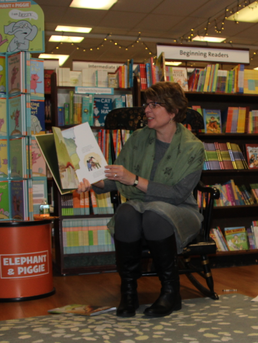 Nancy reading from THE YIN-YANG SISTERS AND THE DRAGON FRIGHTFUL. Nancy reading from THE YIN-YANG SISTERS AND THE DRAGON FRIGHTFUL. Bio: Nancy Tupper Ling surrounds herself with books. She is an award-winning children’s author, poet, book seller, and librarian, who has great fun teaching poetry to all ages. Her picture books have received starred reviews from Kirkus and Publishers Weekly, and her next anthology entitled For Every Little Thing (Eerdmans Publishing) is due out in September 2021. Titles of Picture Books: My Sister, Alicia May (Pleasant St Press) Double Happiness (Chronicle Books) The Story I’ll Tell (Lee and Low Books) The Yin-Yang Sisters and the Dragon Frightful (Putnam Young Readers) For Every Little Thing (Eerdmans Publishing in September)
2 Comments
~Hosted by Amanda Smith Welcome to the final installment of 24 Carrot Writing's Graphic Novel Virtual Panel Discussion. Over the last two weeks (Part 1 and Part 2), our talented panelists have shared insights about the strengths of graphic novels and their process as creatives. Join our panel as we jump into the last two meaty questions: Middle school students seem particularly drawn to graphic novels, and often graphic novels are set in middle school. What does that communicate about the market for upper middle grade/ lower young adult readers? Are graphic novels purposefully aimed towards the middle school reader, or is there something in the graphic novel format that perfectly mashes with the middle schooler’s brain? Breena Bard: Middle schoolers are taking their first steps toward independence, developing their own beliefs and opinions in a way that they hadn’t before. They are exposed to a diversity of ideas and people, and as they begin to open their minds, they are perfectly primed to receive a radical new method of storytelling. Kids are free of the biases that keep many adults away from comics, and they aren’t pressured to maintain a high-brow reading list. And as long as adults react to graphic novels by wringing their hands or turning their noses up, graphic novels will also have a certain rebellious spirit that might attract middle school readers as well. Plus, comics are just super fun! Terri Libenson: I’m not sure, really. My characters are all 13 and in seventh grade, yet most of my readers are younger, often in third through sixth grade. Many kids read “up”; that is, they tend to read about characters older than them. I’m not as knowledgeable about what 7th-9th graders are reading, but I personally think there is an opportunity for graphic novels geared for that age bracket. Tom Angleberger: Middle school is such a weird time when kids sometimes feel like they should be giving up the type of books they loved in elementary school and reading big thick books. The growing acceptance of graphic novels creates a loophole here. A kid who read Smile in third grade can read Guts in seventh grade. (Of course, as far as I’m concerned, kids should keep reading great kids’ books with pride FOREVER!) Terry Ebbeling: Middle-school students are high energy and don’t often have a lot of “sit” in them. They are also visual learners. Graphic novels appeal to this age because of the pictures which break up the prose and allow students to “see” the story. While middle-school students enjoy graphic novels, there are also a number of authors who gear their graphic novels towards upper elementary students and even high schoolers. Honestly, I like them, too! What would you like to say to those well-meaning adults who act as gatekeepers regarding graphic novels? To those who see graphic novels as inferior reading? Kayla Miller: Comics ask readers to use different skills than prose books. To really read a graphic novel, you have to read not only the text, but also to observe environments, body language, and facial expressions. It can be a really engaging and emotional experience. When reading prose, you have to imagine the visuals based on the descriptions given to you and fill in details about the world around the characters, but when you’re reading comics you have to fill in the characters’ inner worlds and use context clues from the art to decipher what they’re thinking and feeling. I don’t think the skills developed reading comics are any less important or useful than those that students gain while reading prose novels. I also get comments all the time from parents that their reluctant readers become eager readers when it comes to graphic novels. If you believe that fostering a love of reading in younger generations is important, you’re only getting in your own way when you disregard graphic novels. Breena Bard: They should try reading some :) Really though, the fact that graphic novels are told with pictures should not disqualify them, and in fact makes them more accessible and engages students’ brains in a really unique way. Perhaps there is fear because graphic novels are a relatively new medium, but so were computers and tablets, and most schools utilize those to great success. Take time to read some of the new middle grade graphic novel classics (ask a middle schooler and they will surely have a list for you!) and keep an open mind to the possibilities these stories and this exciting format have to offer. They really are quite wonderful! Terri Libenson: It couldn’t be further from the truth (and if it helps, I avidly read comics as a kid, and now I read such a wide range of books, from non-fiction to fiction, including – yes – graphic novels for adults!). As I mentioned, graphic novels can be quite layered as well as visually stunning and rich in story. And then some are just plain fun, and that’s okay. Graphic novels vary just like prose books. And they are, indeed, BOOKS. Tom Angleberger: I think people are hung up on word-count. They assume 100,000 words is better than 1,000. Or 100. Or zero, in the case of wordless graphic novels. Well, that’s just dumb. Do they also assume that a novel by Joe Smedlap is better than a sonnet by Shakespeare? I think we should judge books on how many brain cells they light up. Trust me, Dog Man lights up a lot more brain cells than Tom Sawyer Abroad. (I was forced to read Tom Sawyer Abroad in 7th grade and am still mad.) Terry Ebbeling : I would tell those reading “gatekeepers” of graphic novels that there are different strokes for different folks in all areas of life, including reading. If students enjoy graphic novels, they are READING! Yay! I do not recommend a steady diet of any one genre, including graphic novels. But, if this genre gets kids into books, then let’s allow and encourage graphic novels. Thank you to Terri, Breena, Kayla, Tom, and Terry for a fabulous discussion. I know I am paying closer attention to details in the settings and characters, as well as other context clues when I read graphic novels. I am also inspired to think visually and cinematically about the scenes I write, and I cannot wait to get my hands on our panel's new releases in May (if I can pry them from my own middle schooler's hands!) BIOS: 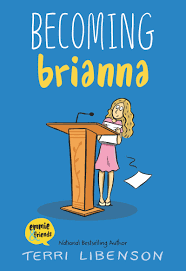 Terri Libenson is the cartoonist of the internationally syndicated daily comic strip, The Pajama Diaries, and the author of the best-selling illustrated middle grade novels, Invisible Emmie, Positively Izzy, and Just Jaime. She was also an award-winning humorous writer for American Greetings for 22 years. The Pajama Diaries launched with King Features in 2006 and currently runs in hundreds of newspapers throughout the country and abroad. Pajama Diaries has been nominated four times for the Reuben Award for “Best Newspaper Comic Strip” by the National Cartoonists Society and won in 2016. Terri lives with her family in Cleveland, OH. Her newest novel, Becoming Brianna will be available in May 2020. To learn more about Terri, visit http://terrilibenson.com/ 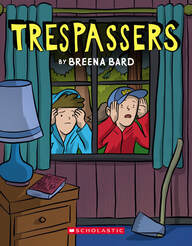 Breena Bard writes and illustrates comics, drawing inspiration from her childhood in Wisconsin, and the stacks of graphic novels on her bedside table. Her graphic novel debut, Trespassers, is set to release May 5, 2020. She lives in Portland, Oregon, with her husband, two kids, and cranky but lovable cat. Visit http://www.breenabard.com/about-1 to learn more. 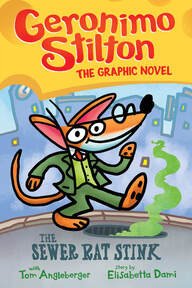 Tom Angleberger is the author of the New York Times, USA Today, and Wall Street Journal bestselling Star Wars Origami Yoda series. He is also the author-illustrator of Fake Mustache and Horton Halfpott, both Edgar Award nominees, and the Qwikpick Papers series, as well as many other books for kids. But he always wanted to draw comics and he’s finally gotten the chance to draw with Geronimo Stilton and the Sewer Rat Stink! (Available May 5, 2020) He’s married to acclaimed graphic novelist Cece Bell, who wrote and illustrated El Deafo. To learn more visit https://origamiyoda.com/the-books/ 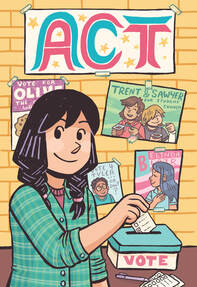 Kayla Miller is the author and illustrator of the best-selling Click series of graphic novels. The third book in the series, Act, is coming out in May 2020 and a fourth book is currently in the works. To learn more about Kayla, visit https://www.kayla-miller.com/ Terry Ebbeling has been teaching grades 7 and 8 ELA for the past eighteen years. She enjoys delving into reading and writing with her students and finds young-adult literature far more riveting than adult literature! This week's reading list:
CLICK and CAMP by Kayla Miller INVISIBLE EMMIE, POSITIVELY IZZY and JUST JAIME by Terri Libenson SMILE, SISTERS, and GUTS by Raina Telgemeier DOG MAN by Dav Pilkey ~Hosted by Amanda Smith Welcome back to 24 Carrot Writing's Graphic Novel Month. Last week our panel discussed the unique strengths of graphic novels for readers, but also, for them as creatives. If you missed Part 1, you can find it here. Lets join our panel of Graphic Novel authors for Part 2. Often those opposed to graphic novels think about these books as shallow or “comic” books, yet today’s graphic novels deal with difficult subject matter such as addiction, racism, startling historical events, and peer pressure. Why are graphic novels such an effective medium for telling these kinds of stories? Terri Libenson: I think a big part of it is because many kids love comics and/or illustrated stories; therefore, difficult subject matter won’t have to be forced on them -- they will automatically want to read about it in graphic novel form. Examples of graphic novels dealing with heavier subjects Many graphic novels have an autobiographical aspect. Why, do you think, does this format lend itself well to autobiographical storytelling? Terri Libenson: Well, all kinds of books have an autobiographical element. But I think good artists have a gift for retelling their memories in a visual way that connects immediately with readers. It can also be fun to “see” the setting and clothing of a different era rather than just read about them. Breena Bard: I’ve never thought about this before! I wonder if it’s because, just like our imaginations, our memories tend to exist in our minds largely as images. If a writer is able to put those remembered images on page as pictures, they can retain some of the vivid detail that might be lost if translated into words. There are some emotions and feelings that can be conveyed better by pictures, and when a picture won’t do, graphic novelists also have written words in their toolbox. It’s the best of both worlds, and for telling something so nuanced and complex as a personal story, I can see why writers would be drawn to a format that’s so flexible and accommodating. Raina Telgemeier's series of graphic novel memoirs. Graphic novel characters are often established fairly quickly and with few words (often one or two speech bubbles.) Please share with our readers some of your character development strategies. What happens behind the scenes, before the reader sees the character on the page for the first time? Breena Bard: For me, characters emerge when I am playing in my sketchbook. The harder I try to “design” a character, the more wooden and forced they feel. But when I let my mind and my pen wander, I am often surprised by the different characters that emerge. I try to spend a lot of time on this earlier side of character development, doodling a new character in every possible facial expression, pose and setting. And if I’m lucky enough to have two characters come to life, I can play with putting them into a variety of vignettes, or mini-scenes. Sometimes these scenes make it into my eventual script, and when they do, they are some of my favorite scenes. Kayla Miller: I think you can say a lot about a character's personality through their appearance and their actions. Every day we make choices about how to present ourselves to the world and comic artists make those decisions for their characters. Clothing, posture, facial expressions, and way of speaking do a lot of the work, but another great tool is drawing a character’s room (or other spaces they decorate and store things in, like a desk or locker). One panel of a character in their living space could be worth paragraphs of description about their personality and interests. Terri Libenson: Well, I have an advantage, as my books are hybrids: part illustrated novel and part graphic novel. The illustrated novel portion contains much more text, so I can set up a character’s story in detailed prose. The GN portion is much more of a challenge, character-wise. One technique: I frequently have characters introduce themselves. And I think dialogue or inner monologue quickly establishes their personalities. Behind the scenes, I try and get to know these characters well so that they seem convincing on paper. They usually have aspects of my personality and memories. Some are also inspired by people I’ve known – although they tend to develop differently as I write. Tom Angleberger: For me it was the matter of redrawing a famous character, Geronimo Stilton, in my own style. And, since he narrates his novels, I had to pick and choose which words of his to use in my panels. But, I’ve been a Geronimo fan for so long that all of that came very naturally. Thanks to our fabulous panel! Join us next week for the last of the panel discussion posts. We will be talking about the middle schooler's brain (ooohhh!) and gatekeepers!
A reading list for this week: CLICK and CAMP by Kayla Miller INVISIBLE EMMIE, POSITIVELY IZZY and JUST JAIME by Terri Libenson NEW KID by Jerry Craft HEY KIDDO by Jarrett Krosoczka THE FAITHFUL SPY by John Hendrix SMILE, SISTERS, and GUTS by Raina Telgemeier AWKWARD, BRAVE & CRUSH by Svetlana Chmakove (great notes on characterization and setting in back matter) 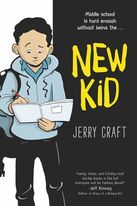 ~ hosted by Amanda Smith For too long the literary value of graphic novels has been questioned. There are parents who tell their kids to pick "real books," while some teachers confiscate graphic novels when their students dare to bring them to class. However, just a week ago, history was made when Jerry Craft's graphic novel, New Kid was awarded the Newbery Medal. The John Newbery Medal is awarded for "the most distinguished contribution to American literature for children" by the Association for Library Service to Children (ALSC). Yes, a graphic novel won a prestigious literature award! Join 24 Carrot Writing this entire month, as we CELEBRATE the strength and beauty of graphic novels and their place on our bookshelves! We've got a distinguished panel and weekly Graphic Novel blogs ready to go. Welcome to Graphic Novel Month at 24 Carrot Writing. MEET OUR PANEL:  Terry Ebbeling is a seventh and eighth grade English Language Arts teacher and reading advocate extraordinaire. 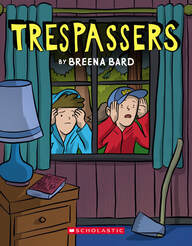 Why did you decide to tell your stories in graphic novel format as opposed to prose novels? Kayla Miller: The art side of things is actually what I committed to first. I’ve always liked both writing and art, but I was more focused on art and chose to go to college to study illustration. I wrote and illustrated comics while I was in school, but I still thought I’d end up illustrating other people’s words and ideas once I graduated. I considered writing a hobby, and art my profession for such a long time that it was sort of a revelation when I realized that people actually liked my stories as much as my drawings. I think comics are just my natural format. Breena Bard: My stories generally unfold in my imagination as movies, and almost before I have any words or even a plot, I can see my characters moving around and interacting in the world. Since I’m not a filmmaker, but I am able to draw, it seems most natural to tell my stories with pictures. And there is a lot you can do with a graphic novel to tell a story as cinematically as possible! Terri Libenson: I studied illustration in college and have drawn cartoons for most of my life. Before I started creating graphic novels, I was a syndicated newspaper cartoonist. I’ve always loved writing, too, so the combination of art and writing suits me very well. Tom Angleberger : I’ve written quite a few prose novels now and will write more. But I’ve almost always had a desire to have more than just text in them, whether it’s origami instructions or a nice map. If a funny picture is funnier than a text block, why not draw it? And, the same goes for any emotional response you’re trying to get from a reader. 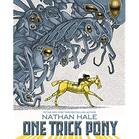 What do you see as the unique strengths of graphic novels? Breena Bard: There is an immediacy to comics and graphic novels that make them very accessible to readers of all ages. I don’t think it’s just the inclusion of artwork, which makes them “faster” or “easier” to read (aka, fewer words). There is something very unique going on in the way the words and images interact, perhaps because they engage very different parts of our brain, that brings a reader right into the story and keeps them there. It’s not uncommon for someone to remark that they finished a graphic novel in just one or two sittings (and as a mom of two with precious little spare time for reading, I consider that a huge strength!) Terri Libenson: Graphic novels are perfect for the reluctant reader or for those who are simply drawn to visual storytelling. And they can be so literary and layered – something most kids know but many adults are just starting to learn. Tom Angleberger: After writing so many books for kids, I’ve become almost obsessed with removing any barriers or stumbling blocks that are going to stop a kid from finishing a story. And one of the biggest stumbling blocks is description. Some readers may be able to read a page of text and “see” a vivid landscape, but some of us never make it through that page. We put the book down after a couple sentences and are never compelled to pick it up again. Meanwhile, the graphic novel reader is gaping in wonder at beautiful artwork. (Well, not in my book, but in some books! Nathan Hale’s One Trick Pony for example.) 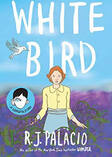 Terry Ebbeling: While I was a skeptic at first, thinking graphic novels were inferior to “regular” books, I have come to appreciate them for middle-school readers. Students these days are visual readers, so the graphics help them comprehend and stay interested- especially reluctant readers. And I have been amazed by how detailed the graphics are! My students recently read White Bird by R.J. Palacio for Pizza and Paperbacks, and I read through that graphic novel twice. The first time I concentrated on the plot line and glanced at the pictures. But, during my second reading, I really appreciated the fine points in the pictures that told a story in themselves. And, when discussing the book with my students, they found even more depth in the pictures that gave them a greater understanding of the darkness of WWII. While graphic novels may not be for every reader, I find the combination of text and pictures to aid in comprehension and enjoyment for some of my readers. Join us again next week as our panel discusses character development and difficult subjects. And while you wait, pick up a few graphic novels and discover for yourself the intricate combination of storytelling through words and pictures. This week's reading list:
Click and Camp by Keila Miller Invisible Emmie, Positively Izzy, and Just Jaime by Terri Libenson One Trick Pony by Nathan Hale White Bird by R.J. Palacio New Kid by Jerry Craft Welcome to our annual holiday gift list! We have asked our guest bloggers and contributors about their favorite 2019 writing and illustrating things. Because they are always fabulous, they have provided a fantastic list of practical, frivolous, and fun gift ideas. Happy shopping!
Jamie Tan is a Senior Publicist at Candlewick Press and has her MA in Children’s Literature from Simmons College. Before working at Candlewick Press, Jamie worked in events and marketing at several independent bookstores. You can find her on Twitter @thejamietan.
Angela Burke Kunkel's debut picture book, DIGGING FOR WORDS: JOSÉ ALBERTO GUTIÉRREZ AND THE LIBRARY HE BUILT (illustrated by Paola Escobar and published by Random House/Schwartz & Wade) releases in Fall 2020. To learn more about Angela, visit her website at https://www.angelakunkel.com/
 Jarrett Lerner is the creator of the EngiNerds series, and is currently juggling seven different upcoming book projects. He is using LOTS of Post-it notes to keep himself organized and on schedule. To learn more about Jarrett visit his website at https://jarrettlerner.com/
 In addition to Lizzy and The Good Luck Girl (Running Press Kids, 2019), Susan is the author of The Upside of Ordinary and numerous picture books. To learn more about Susan, visit her website at https://www.susanlubner.com/. 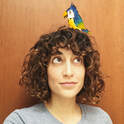 Tania de Regil: Honestly, the greatest thing I’ve learned this year, both in my writing and illustrating, is letting go! I know it sounds a bit cheesy, but it’s true. No one should worry about what people are going to think or say about their work, so I remind myself every day that I do this because I love it. In more technical aspects, I started using the Schmincke watercolors and they are fantastic! Tania de Regil is an author and illustrator from Mexico City who made her US debut this year with A New Home/ Un Nueva Hogar (Candlewick Press, 2019). To learn more about Tania, and browse her online print shop for some lovely Christmas gifts, visit her website at https://taniaderegil.com/books/
 Lisa is a children's librarian and author of 16 WORDS: WILLIAM CARLOS WILLIAMS AND "THE RED WHEELBARROW" (Schwartz & Wade Books, 2019) which has received starred reviews from Kirkus and Publishers Weekly and is A Junior Library Guild Selection. Lisa's second picture book HOUND WONT GO (Albert Whitman & Co.) launches spring of 2020. To learn more about Lisa visit her at lisarogerswrites.com.
Studio Goodwin Sturges is a boutique artists agency dedicated predominately to children’s trade publishing. They look for artists who have a real sense of a child’s world and how to dynamically depict it. To learn more about Studio Goodwin Sturges please visit them at: http://www.studiogoodwinsturges.com/.
 Kelly Carey is a co-founder of 24 Carrot Writing and her debut picture book, HOW LONG IS FOREVER? launches from Charlesbridge in April of 2020. To learn more about Kelly visit her website at http://www.kcareywrites.com/.
 Lori Mortensen is an award-winning children’s author of more than 70 books and over 350 stories and articles. Recent releases include AWAY WITH WORDS: THE DARING STORY OF ISABELLA BIRD and IF WENDELL HAD A WALRUS. Visit her website at www.lorimortensen.com.
 Ileana Soon is an illustrator/visual development artist who grew up in Borneo before making her way to Los Angeles where she currently lives and works. NIGHT TRAIN is her debut as a picture book illustrator. Learn more about Ileana at http://ileanasoon.com.
 Christy Ewers: Two things I cannot live without as an agent (and the only things that keep me organized) are: 1. Sharpie Pens. They are the best fine-point pens out there, and anyone who has seen my handwriting knows that a nice clean black line means a lot to me! I use them to hand-address the envelopes when we do promotional mailings. I realize that the fact that I hand letter 250 addresses 3x a year makes me crazy, but the fact that they can withstand that kind of abuse is proof positive that they are awesome! 2. A nice college ruled small notebook with a thick, sturdy cover. I write everything in my notebook. From keeping a to-do list (complete with boxes to check!), to taking notes in meetings or conferences, to jotting down story ideas, to score-keeping my family rummy games, it’s got everything in it. It’s my travel companion and life line. Let’s not talk about what would happen it it was misplaced! Right now, I’m using this one from Madewell. Christy T. Ewers is one half of the agenting team at The CAT Agency, where she represents illustrators and author/illustrators in the children’s industry, along with her mother and partner, Chris Tugeau, who founded the agency in 1994. The CAT Agency is a boutique agency that believes in the hands-on approach in representing a diverse group of talent from all over the world.  Rachel Lynn Solomon: I'm always cold, so my favorite writing accessory has to be these adorable writing gloves from Storiarts. They come in a variety of bookish patterns and make lovely gifts for author friends -- or for yourself! 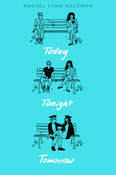 Rachel Lynn Solomon is the author of the YA novels You'll Miss Me When I'm Gone, Our Year of Maybe, and the forthcoming Today Tonight Tomorrow (6/16/20), all from Simon & Schuster/Simon Pulse. You can find her online at rachelsolomonbooks.com and on Twitter @rlynn_solomon.  Amanda Smith: My favorite way to keep track of my daily writing tasks, is this day planner by Day Designer. I love the roomy pages, with designated to-do list space, for each day. It also features tabs, and a month overview and has plenty of extra note pages to jot down monthly goals. It comes delivered in a beautiful box, which makes it an ideal no-wrapping- required gift.  Interview by Annie Cronin Romano Welcome Ann! We are happy to have you join us to be interviewed by 24 Carrot Writing! How did you come to be a children’s book author? I have always loved to read and write. My father took me to the library every week as a child. He let each of his eight children check out three books a week. Imagine keeping track of that? I was late to learn to read--maybe the end of first grade. He read Madeline to me and I knew how important that book was. After all, my siblings and I walked in lines, just like Madeline. When you write, do you plot out your stories or are you more of a pantser? I suppose I’d describe myself as more of a pantser. I write one sentence telling what my book will be about. Then I dive into the research and build a word/phrase bank. I have had early drafts for picture book that run over 20,000 words. I peel away bit after bit until my story reveals itself to me. Not the most efficient practice, but it works for me. You have two recent releases: PENCIL: A STORY WITH A POINT (Pajama Press, 2/15/19) and WHY SHOULD I WALK? I CAN FLY! (Dawn Publications, 3/1/19). What was your inspiration for these stories? I was cleaning my kitchen junk drawer. I have several more throughout the house. Maybe more than “several”. As I came across each item, I began to wonder if it might have a personality. Like rubber teeth, for instance. What might they say? To whom? For Why Should I Walk? I Can Fly, I had been sitting on my back porch with my husband. Each of us sipping cold coffee. We noticed a baby robin in a tree, on a limb, contemplating that first leap from the nest. Mother and father bird were nearby. 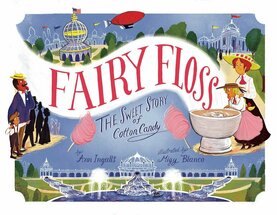 Two of your nonfiction picture books involve jazz music: THE LITTLE PIANO GIRL: THE STORY OF MARY LOU WILLIAMS, JAZZ LEGEND and J IS FOR JAZZ (such a fun read)! Can you share what sparked these stories? Are you a musician yourself? I can play the sticks if pressed into it. I do love music and still love to dance even though I’m a bit arthritic these days. I got the idea for both books on a day I subbed for my music teacher friend who had an ongoing unit on jazz. I wondered if a jazz alphabet book had ever been written. As I pondered who or what to use for the letter W, my jazz historian friend reminded me of Mary Lou Williams, the First Lady of Jazz. As I began to read about her, I was totally hooked. My sister, Maryann Macdonald, paired with me in the writing of that book. It sold first and about 3 years later, J is for Jazz sold. FAIRY FLOSS: THE SWEET STORY OF COTTON CANDY is another of your nonfiction picture books. What lead you to write this delicious story? Sonal Fry at Little Bee asked me to write this book. She gave me lots of freedom in deciding what to write. When I learned that the Electric Candy Making Machine was first introduced at the 1904 World’s Fair in St. Louis, I was hooked. I did quite a bit of the research at the UMKC Dental School Library since one of the inventors was a dentist. He also wrote books for children. How cool is that? 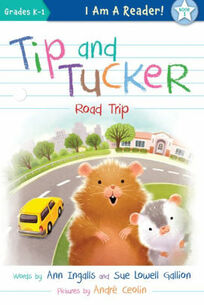 You have written several early reader books, including the forthcoming TIP AND TUCKER: ROAD TRIP (Sleeping Bear Press, 3/15/19), co-written with Sue Lowell Gallion. What was the process of co-writing like? Co-authoring with Sue is a dream come true! We really think alike and arrive at an ending in the same way. We are willing to defer to one another as we trust where the story will go. I’ve had equally good experience with my sister, Maryann, and with Barbara Stuber. She and I co-authored a book that is still slowly making the rounds. What do you love most about being an author? When I see a child smile, laugh, wonder, and learn from one of my books, I think I have done my job. That really is what keeps me writing. I plan to do this until my last breath. What is the most challenging part of being an author? For me that would be keeping all my files in order. I have many, many versions of each manuscript before it becomes a book. I study and compare them and see if there is any bit of magic in one before I discard it. 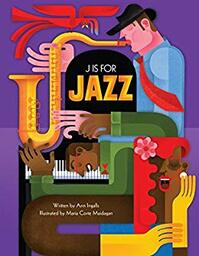 What is your editing process like? Do you belong to a critique group? I do belong to a critique group. Jody Jensen Shaffer and Sue Lowell Gallion and I try to meet up every couple of weeks or so. We read exemplars (recently published) and then share our own work. We may read each piece 2 or 3 times slowly and carefully. Then we play with possibilities and word choices, story arc, tension, etc. It is the most satisfying experience. We also talk about the publishing world, share our disappointments and successes. All very, very good. You have published over 25 books. Are there any particular favorites which hold a special place in your heart? I'm really proud of J IS FOR JAZZ. It was vetted by three important jazz historians and is accurate. I really loved studying jazz history and making it come alive with a bit of jazz slang. I hope my readers feel the same way. As you have many book launches under your belt, do you have any words of wisdom for debut authors regarding marketing/publicizing their new book babies? I’m not especially good at promotion. Thank heavens my publishers are. I do lots of school and library visits and sell books there. I have been to several conferences for librarians. These are very good. SCBWI conferences and literary festivals other good way to connect with parents, teachers, and students. I’d love to do another conference or festival this year. Maybe someone reading this will ask me to present. Here’s hoping. :) What advice would you give to writers out there in the query/submission trenches? Study the marketplace. Before I did this seriously, I had very few sales. Since that time, I’ve had nearly 40 more sales. I take about 15 minutes a day and search for editors’ wish lists, publishers’ lists, and names of new publishers. This really helps me direct my submissions. Be prepared for rejections. Take the bad with the good. What were some of you favorite books as a child? I loved the Cherry Ames, Student Nurse books and read them over and over hoping one day to actually be a nurse. As an early childhood and special education teacher, I did bandage plenty of knees and elbows from playground mishaps. My grandmother read A. A. Milne to me. I completely love his work, most especially the poem that goes, "When I was one, I had just begun…" What are a few of your favorite books as an adult? Louise Penny and Gary D. Schmidt are my all time favorite authors. They are in categories of their own making. I will admit to reading each of their books at least twice. Three time for OKAY FOR NOW. We’d love to know what you’re working on now. Any projects coming up? I am working with Jane True on a bio about Eunice Kennedy Shriver. Hoping to wrap that up this weekend and send it out. We have an editor with interest. Please cross your pinkies! I am also going to be writing two more Tip and Tucker books with Sue Lowell Gallion for Sleeping Bear and I have another silly book in the works that may go to Pajama Press. And a book idea, not yet fleshed out for Dawn Publications. Thanks so much for sharing your experiences with 24 Carrot Writing, Ann! Ann Ingalls writes for both children and adults and is the author of over twenty-five books. She loves chocolate, swimming, playing Bridge, and traveling. To learn more about Ann and her work, visit her website, www.anningalls.com. She is also on Twitter @AnnIngallsBooks.  Interview by Annie Cronin Romano Welcome Lori, and congratulations on your latest picture book, AWAY WITH WORDS: THE DARING STORY OF ISABELLA BIRD, which hits shelves March 1st! Thanks, Annie. Writing about Isabella Bird was its own adventure and I’m delighted to have the chance to tell you more about it. How did you come to be a children’s book author? Although I was always an avid reader, writing didn’t occur to me until I was a stay-at-home mother of three. When I was re-introduced to children’s literature, I wondered what I could write. I’ve been writing ever since. Can you share the inspiration for AWAY WITH WORDS? What drew you to share Isabella Bird’s story? Since Isabella Bird lived during the Victorian Age, like many people, I hadn’t heard about her. However, when I began searching online for women’s firsts, such as first woman doctor, first woman astronaut, etc. I discovered Isabella Bird was the first woman inducted to the Royal Geographical Society. Once I delved into some research, I knew I wanted to tell her unique and exciting story. AWAY WITH WORDS is a nonfiction picture book biography. What are some of the ways your process with this manuscript was different from that of your fiction work? Writing fiction and nonfiction has more similarities than one might imagine. In both cases, the author needs to bring the character to life and create an underlying theme that will be meaningful for young readers. For nonfiction, it requires a lot of research before I discover how I want to tell their story. Since picture books can’t and shouldn’t include everything about someone’s life, picture books have to be very focused and cut to the chase. I love picture biographies because they are so focused, illuminating the most fascinating aspects of someone’s life and his/her accomplishments. When I write fiction, however, it’s all up to me to come up with an appealing character and storyline. This involves a lot of introspection and exploration to discover the story I want to tell. Tell us about your road to publication for AWAY WITH WORDS. Was it bumpy? Smooth sailing? Just like Isabella Bird, this picture book manuscript had its own journey with a lot of twists and turns. I began writing the manuscript 10 years ago and it went through many revisions. However, none of them seemed quite right in spite of an agent’s interest and input. In time, the agent and I parted ways, and I put the manuscript away. However, a few months later, I decided to take another look since I still believed in Isabella’s story. When I revised this time, a metaphor sprang to mind that became the heart of the story. “Isabella was like a wild vine stuck in a too small pot. She needed more room. She had to get out. She had to explore.” This comparison created a unique theme that brought Isabella’s story to life in a way that other versions hadn’t. Along the way to publication, there was a new agent, new editors, and a search for the perfect illustrator. After more than 100 years, I’m delighted that Isabella is off on a new journey as young readers discover her exciting story. In terms of your writing process, do you plot before you write or are you more of a pantser? Oh, wouldn’t it be nice if I knew where I was going when I begin to write? Sometimes I do, but most of the time I am a pantser---writing by the seat of my pants until I figure out where I’m going. My manuscripts usually start with the crumb of an idea—a title, a character, an illustration—then I go this way and that until I find my way. What is your editing process like? Do you belong to a critique group? I spend a lot of time writing and revising. It takes time to develop a character, storyline, and theme, as well as a lively, read-aloud text. With each revision, the manuscript gets better. New ideas come to mind, I understand the character better, and language begins to flow. Once I’ve completed a manuscript to the best of my ability, I share it with my critique groups—one that meets in person, and another online. Over the years, I’ve found that trusted critique groups are invaluable. They not only celebrate the things that work, they point out areas that don’t make sense and offer suggestions. After I get feedback, I revise again until I’m happy with the result. We don’t always agree, but that’s okay. Writing is a subjective endeavor and, in the end, an author must follow their heart. What do you love most about being an author? When I look back on the books I’ve published, I’m so delighted to be part of the picture book community. For me, there is something magical about shaping words into stories, seeing them come to life through the eyes of extraordinary illustrators, then sitting down, book in hand, and reading those stories to young readers. What is the most challenging part of being an author? Coming up with stories on a regular basis and all the rejection that’s part of every author’s life. On your website, you mention some of your favorite books as a child, including Where the Wild Things Are and A Wrinkle in Time. What are some of your favorite books now? These days, I have so many favorites, it’s impossible to name them all. However, some of my favorite picture book authors include Oliver Jeffers, Julie Fogliano, Liz Garton Scanlon, Don Brown, and Alex Latimer. You have published over 100 books. Are there any that are particular favorites of yours or hold a special place in your heart? As you can imagine, they’re all meaningful to me because I spend so much time on each manuscript. However, one reader favorite is Cowpoke Clyde and Dirty Dawg published by Clarion. It’s a wild, rambunctious read aloud, illustrated by wonderful Michael Allen Austin, that became one of Amazon’s Best Picture Books in 2013. We’d love to know what you’re working on now. Any projects coming up?
I have some wonderful projects coming up. In 2020, Houghton Mifflin Harcourt will release another picture book biography that will be illustrated by the talented Chloe Bristol. Because its publication date is still a year out, mums the word about the subject for now. But I’m especially looking forward to sharing this individual’s unique and curious story. I’m also excited about the recent sale of a new fiction picture book. I’ll be able to share more details in the coming months once the illustrator has been selected. What advice would you give to writers out there in the query/submission trenches? Read the genre of stories you want to write. Study story structure, beginnings, middles, and endings. Study character and voice. Then, keep trying. Be persistent. Persistence is key. As you keep writing, your manuscripts will get better. Don’t be in a rush to submit. Rather, focus on making each manuscript the best that it can be. When it’s irresistible, success is only a submission away. Thanks so much for sharing your experiences with 24 Carrot Writing, Lori! Lori Mortensen is an award-winning children’s book author of more than 100 books and over 500 stories and articles. Her upcoming picture book biography, Away with Words, the Daring Story of Isabella Bird (Peachtree), is about a Victorian traveler who defied society’s boundaries for women and became the first woman inducted into the Royal Geographical Society. Recent picture book releases include If Wendell Had a Walrus (Henry Holt), Chicken Lily (Henry Holt), Mousequerade Ball (Bloomsbury) illustrated by New York Times bestselling illustrator Betsy Lewin, and Cowpoke Clyde Rides the Range (Clarion, 2016) a sequel to Cowpoke Clyde & Dirty Dawg, one of Amazon’s best picture books of 2013. When she’s not letting her cat in, or out, or in, she’s tapping away at her computer, conjuring, coaxing, and prodding her latest stories to life. For more information about her books, events, critique service, and upcoming releases, visit her website at www.lorimortensen.com.  Hosted by Kelly Carey 24 Carrot Writing is thrilled to welcome author Jarrett Lerner to the site. Jarrett is the author of EngiNerds, a middle grade series starter hailed by Kirkus as a “boisterous balance of potty humor and geek pride” and a “rollicking young engineer’s adventure”. Its sequel, Revenge of the EngiNerds launches next month and I know my nephew is hoping for more side-splitting fun (and farting robots!). Jarrett knows how to have fun in his writing but he is also passionate and serious about being a contributing force in KidLit and having a positive effect on his young fans. To that end, Jarrett cofounded and helps run MG Book Village, an online hub for all things Middle Grade, and is the co-organizer of the #KidsNeedBooks and #KidsNeedMentors projects. Welcome to 24 Carrot Writing Jarrett! Can you tell us a bit about your journey to the printed page? How did you become a published author? I’ve been drawing and writing since I can remember. Growing up, I definitely had other interests and hobbies – I played baseball and guitar and skateboarded. But I was always in the middle of a book or two, and I always had notebooks lying around with stories, sketches, and ideas. And while my interest in those other things waned, my interest in reading and creating only grew, and eventually flared up into a full-blown passion. Even so, it never occurred to me that I could become a published author. In college, I was writing like crazy. And sure, I fantasized about being published. But I truly believed that that’s all such thoughts ever were and ever would be – fantasy. It took an author who I looked up to a great deal challenging me on that and encouraging me to make a go of it before I fully took myself and my work seriously. And then it took years and years to really find myself as a creator, to understand where the stories I wanted to tell “fit.” Or, to put it differently, it took years and years to accept and embrace the fact that I stopped maturing around the age of 10, and that I just wanted to write about farting robots and draw monsters all day long. Fans of EngiNerds are excited for the sequel, Revenge of the EngiNerds. When did you decide to write a sequel? How did it feel to go back and revisit Ken and his EngiNerd crew in a new manuscript? Even my earliest drafts of the first book ended on a cliffhanger (I’m a big fan of them!), and when the book eventually sold, it was bought along with a sequel. So I knew pretty much from the get-go that there’d be this follow-up. Revisiting the crew in a new manuscript was both fun and frustrating. I love these characters, and tossing them into a bunch of new crazy situations was a total blast. But there were times when I wished they weren’t so fully formed in my mind (and in the first book!), when if one or another character was just a little more like this or that it would’ve made the plotting of this second book a whole lot simpler. But that just forced me to challenge myself, and in the end, I think, I produced a better book because of it. You just announced the launch of a new series, Geeger the Robot, an early Chapter Book launching in 2020. How would you compare working on your MG books to working on this Chapter Book series? Henry James once described novels as “loose, baggy monsters.” He meant it especially when comparing them to short stories, in which there’s less room for detours and digressions and, on the part of the reader, less tolerance for “imperfection.” And if there’s a spectrum for such considerations, then poems would be at the opposite end from the novel. In a poem, a reader might notice (and be irked by) a single out-of-place syllable. I think James was onto something. With novels, I feel more free to take detours or linger in a scene a bit longer than is strictly necessary, just because it might be interesting or enjoyable. You don’t really have that luxury in shorter works. But at the same time, there’s something thrilling about chasing the “perfection” that is (or at least seems) possible in shorter works. I labor over all of my sentences. But the shorter a work is, the fewer the sentences it contains, the more “right” I feel those sentences need to be. 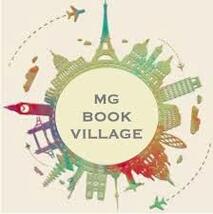 You have taken your passion for writing and used it to fuel the creation of projects and communities like MG Book Village, Kids Need Books, and Kids Need Mentors. Can you talk about how your writing journey lead you to each of these endeavors? I think my passion for storytelling and creating has always had a tendency to “spill over.” I read as much, if not more than, I draw and write. I get really, really excited about other people’s work, and want to share it with the world, and I think my involvement in the MG Book Village sprung out of that. And Kids Need Books and Kids Need Mentors – those are both projects aimed at improving and enriching the lives of kids. That’s something I try to do with my books too. While it may look like I’m scattered or that I’ve got too many irons in the fire, I see all of these projects as related. You have a great natural talent and interest in illustrating. How did you land on MG and Chapter Books and not PBs or graphic novels? Is there a PB or graphic novel in your future? I’ve been drawing longer than I’ve been writing, and growing up, the two were always linked for me. But I think school – and in particular high school and college – severed them in my mind. There weren’t any pictures in the books we were reading for my literature classes. And if I’d been caught with one that did have them, I probably would’ve been ridiculed for it. And the only time visual art was linked with storytelling was in my Art History courses in college, and then in an extremely scholarly manner. There’s a great quote from Picasso – “It took me four years to paint like Raphael, but a lifetime to paint like a child.” I learned a great deal in high school and college. But I think it knocked me off my creative track. I was learning to write like Dostoevsky and Philip Roth and talk about paintings like I was interviewing for a job at MoMA when my heart lay with 8-year-old Jarrett making his own silly comic books in the back of the classroom. Fortunately, it didn’t take me a whole lifetime to reconnect with that kid. And yes – there are some illustrated works in my future. I’m not allowed to talk much about them just yet, but if you follow me on Instagram and/or Twitter, I now and again give some sneak peeks (shhh… don’t tell my publisher!). 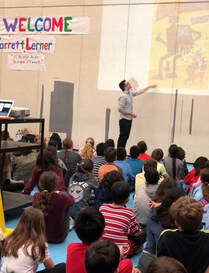 You have done an impressive number of author visits in a far reaching number of states. For example, you’ve been to California, Illinois and all over New England. How did you land your bookings? Manage your travel? And how have you planned your presentations to appeal to different audiences? I’ve been lucky to receive a number of invitations to schools. And once I have an invitation, I usually start doing outreach to try and turn a single visit into a sort of mini-tour. Last year, for instance, an educator in Chicago expressed interest in my visiting her school. I put out a call to others in the area and was able to get a week’s worth of visits. I’ve organized several other trips in just that way. But I think it’s important to say that I wouldn’t be able to do this as successfully had I not put a lot of time and effort into connecting with educators and librarians all across the country (which is something I continue to do all the time!). I truly believe that kids’ educators and librarians and kids’ book creators are colleagues, and that the more we work together, the better work we can all do. Putting in that time and effort to make these connections has enriched my life in many ways. I’ve learned SO much. I’ve made incredible friends. I’ve grown as a person and as a creator. And, more practically, it’s helped me when it comes to booking visits. 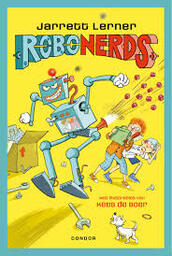 The Dutch version of EngiNerds just launched. How did you balance excitement over a foreign edition with a new illustrator doing the cover and a new title? How can authors and illustrators, who cherish their work, make space to let the creative energy of others add to it? I fully embrace the collaborative aspect of book-making. Sometimes I feel it’s a bit preposterous that authors get to have their names alone on their book covers! It’s almost always a team effort. I’ve also always subscribed to the idea that, once you put a book out into the world, it’s no longer yours – or no longer only yours. In engaging imaginatively with a work, each reader assumes a slice of ownership of the book too. I think because of all this, I find it thrilling to see what other creators do with “my” work. But that doesn’t mean I can’t question or challenge some of the choices they make – that’s part of the collaborative process too. At 24 Carrot Writing we are big on goal setting. Do you set detailed writing goals, broad yearly goals or do you fly by the seat of your pants? I think I do some combination of both – I set goals by the seat of my pants! I am never working on just one project. I always have two, three, and sometimes even four or five going at once, each of them usually in a different stage of completion (or incompletion). On any given day, I’ll take two things into consideration: (1) what I feel like working on, and (2) about how much time I’ll have to work on it. Given that, I might do some exploratory doodling, or dive into novel revisions, or work on putting together a picture book dummy. Every now and again, though, I really “land” on a certain project, and will give it my full attention and concentrated energy until it’s finished (or a draft or version of it is complete). I guess you could call it “occasionally organized chaos,” but it keeps things both fun and productive for me. And that’s huge. If I’m not enjoying the work, it shows in the results. That might not be true for all creators, but it is for me. Of course, sometimes some of this goes out the window when you’ve got deadlines. But the majority of the time, I meet my deadlines without changing things up. 24 Carrot Writing sits on the premise that authors need to set and accomplish both writing goals and the business of writing goals. How do you balance your responsibilities to MG Book Village, Kids Need Books, and Kids Need Mentors with writing your books and hitting your writing deadlines? I touched on this in an earlier question, but basically, I think it’s all about perspective, and about how you define your work and your goals. I love, love, LOVE making books. And yes, I could probably do that and only that all day every day for the rest of my life and be BEYOND content. But I don’t see making books as the only aspect of my work as a creator – or, what’s more, as the only facet of what I, as a human being, have to offer during my time on the planet. In addition to making good books, I want to more directly help and inspire kids, and I want to give back to the various communities that have supported and sustained me. With such goals, it’s not so much about finding balance as it is about finding the time to get it all done! What advice do you have for beginning writers? Embrace, explore, and celebrate the things that make you (and your creative output) uniquely you. The weirder and wonkier, the better. To learn more about Jarrett you can visit him at jarrettlerner.com/ , or find him on Twitter @Jarrett_Lerner.
You can purchase copies of EngiNerds or Revenge of the Enginerds using these links: www.indiebound.org/book/9781481468725, www.indiebound.org/book/9781481468749, www.amazon.com/EngiNerds-MAX-Jarrett-Lerner/dp/1481468723/ref=sr_1_1?ie=UTF8&qid=1547132304&sr=8-1&keywords=enginerds , www.amazon.com/Revenge-EngiNerds-MAX-Jarrett-Lerner/dp/148146874X/ref=sr_1_1?ie=UTF8&qid=1547132360&sr=8-1&keywords=revenge+of+the+enginerds . And be ready to have Jarrett in a bookstore near you! Jarrett will be at the South Portland Public Library in Maine on February 23rd and at Print Bookstore in Maine on March 12th. 24 Carrot Writers be sure to say hello!  Hosted by Annie Cronin Romano Welcome Laura, and congratulations on the publication of your debut picture book, PORCUPINE’S PIE! How did you come to be a children’s book author? I’ve always loved to read, but it wasn’t until I taught third grade and used picture books as teaching texts across the curriculum that I decided I wanted to try my hand at writing. I was fascinated by how a 32-page illustrated book could encourage, inspire, or inform. I was hooked! Can you share the inspiration for PORCUPINE’S PIE? Was there a particular reason you chose a porcupine as the main character of your story? And do you enjoy baking? I was inspired by Tammi Sauer’s post during PiBoIdMo 2014 (Now Storystorm, hosted by Tara Lazar), which challenged writers to frame a story as a How-To Book. My brainstorming that day included this jot in my notebook: “How to make porcupine pie (or a pie for a porcupine)”. Even though it did not evolve into a How-To Book, that was the humble beginning of PORCUPINE’S PIE! Since the title came first, I think it was the alliteration of Porcupine’s Pie that spoke to me, rather than there being a particular reason that a Porcupine became my main character. I do enjoy baking and the idea that food brings people together was an important theme for my story. Tell us about your road to publication for PORCUPINE’S PIE. Was it bumpy? Lots of twists and turns? Smooth sailing? I got serious about writing for children in 2011 when I joined SCBWI. I’ve written about 90 stories and received approximately 120 rejections since I started tracking them in 2015. I wrote my first draft of Porcupine’s Pie in 2014, won the Beaming Books Picture Book Writing Contest in 2016, and am holding it in my hands and sharing it with kids in 2018. A long journey, but well worth it! In terms of your writing process, do you plot before you write or are you more of a pantser? Both! For Porcupine’s Pie, I brainstormed a few possibilities for the plot since my idea started with the title. But as I drafted, I veered off my plotted path and came up with a much better story. What do you love most about being an author? Connecting with kids and being a small piece of the puzzle that gets them excited about reading and writing. And being part of the amazing kidlit community. What is the most challenging part of being an author? The waiting! What were some of you favorite books as a child? I was going through my childhood picture books recently and rediscovered Panda Cake by Rosalie Seidler. It struck me how similar the title is to Porcupine’s Pie! That book must have planted a story seed in my head long ago. What are a few of your favorite books as an adult? The Giver by Lois Lowry Prodigal Summer by Barbara Kingsolver A Monster Calls by Patrick Ness We’d love to know what you’re working on now. Any projects coming up? I’m pleased to share that my next book, a nonfiction picture book biography about Mister Rogers will be published in Fall 2019 by Atheneum. It is called Fred’s Big Feelings: The Life and Legacy of Mister Rogers, illustrated by Brigette Barrager. I always have multiple manuscripts in progress. Some of the ones I’m working on now involve robots, rabbits, and puppets. What advice would you give to writers out there in the query/submission trenches? If you are serious about getting published, do everything you can to improve your craft, build your personal kidlit community (i.e. critique group), and, importantly, cheer others on. Once your stories are the best they can be, submit, submit, submit! Compile a list of agents and editors you’d love to work with. Track your submissions. Celebrate your rejections. (It means you’re getting responses!) For most people, it takes years to connect with the right agent or editor for your work. Be determined. Be persistent. Be in it for the long haul. Where can people learn more about you and your book? You can find me on the web at laurarenauld.com and on social media: Twitter - @laura_renauld Facebook – @kidlitlaura Instagram - @laurarenauld Thanks so much for sharing your experiences with 24 Carrot Writing, Laura! 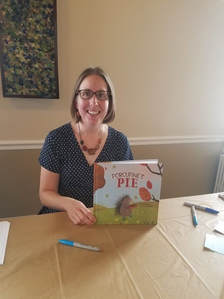 Laura Renauld is a former third grade teacher who now spends her days imagining and creating. When she is not writing picture books about porcupines, pirates, and pickles, Laura can be found on a trail, at the library, or in the kitchen. She lives in Northern Virginia with her husband and their two story-telling sons. This is her debut picture book.  Guest Blog by Susan Lubner Please welcome picture book and middle grade novel author Susan Lubner to the 24 Carrot Writing blog. We are excited that Susan is joining us as a guest blogger to share the process that brought her latest middle grade novel, Lizzy & the Good Luck Girl (Running Press Kids, 2018) from idea, to completed manuscript, to its launch onto bookshelves this month. Welcome Susan! A funny thing happened to me after I sold my middle grade novel Lizzy and the Good Luck Girl. After I posted the good news on Facebook in July 2017, a writer friend congratulated me and said, “Boy, you work fast!” A little more than a year had passed since we had taken the same eight-week writing workshop together. I explained to her that I had started the book before the workshop. I didn’t mention that at one point I wondered if I’d ever finish it. But her comment got me thinking… how long had it actually taken me? And what were some of the strategies I used that finally got me to the end? 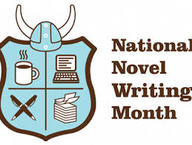 The first saved document for “Lizzy” was dated October 2014. It included a whole bunch of vague notes and a character with a name I now don’t recognize. By October 2015 I had the start of a disjointed meandering story. In November 2015, I signed up to participate in NaNoWriMo for the first time ever. I was scared to death.  Turns out that November was a month of firsts for me. NaNoWriMo of course, and I bought an egg timer in earnest. I set limits for breaks. And timed uninterrupted writing sessions. Never before had I given myself a deadline to write anything. And here I committed myself to completing a first draft in a month. I wished November had 31 days. Thanks to fortitude and my ticking timer, I completed NaNoWriMo. Now I had a much longer disjointed, meandering story that had no ending. Still, I was elated I had something to work with. My main character was nicely developed, an arc was rising. Sub plots had been added. I was excited to dig in and start rewriting. Without a doubt I would find my elusive ending. By May 2016, with trusty egg timer keeping me focused, and my equally trusty critique partners providing feedback, my manuscript was chugging along. I signed up for that eight week writing workshop. Week six was all about endings and I still needed one. I spent most of the summer using the wonderful info I culled from the workshop; chopping, tightening, and polishing. But when summer ended, my story still had not. In September 2016, I headed to Sequim, an area in Washington State for a five day retreat with my agency. They dubbed it camp ECLA (Emerald City Literary Agency). Although I am a fourth generation “Maniac”, being from Maine did not negate the fact that I hated summer camp. That four-letter word brought back fearful flashbacks of my eleven-year-old self as a reluctant camper: dark woods; nervous to make friends; being forced to jump into a freezing cold lake; cabins with spiders and flimsy doors that didn’t lock (what if a bear came in?). Turns out for me adult writing camp is a whole lot better than summer camp in the 70s. My agency-mates who I met for the first time were so friendly and beyond awesome! The cabins had doors with locks (and a kitchen…and a gorgeous view of the lake which I wasn’t forced to jump into!). And the whole time I was there I only saw one spider, and it was pretty small. One by one I checked off each little box on my get-over-your-idiotic-fears-Susan list I was keeping inside my head. I had one box left to check. I still needed to find my ending. On an evening just before sunset, my agent and I, each sipping adult-camp drinks, sat outside and discussed my unfinished novel. “What’s at the heart of your story?” Linda asked me. “What does Lizzy want?” “A sign that everything will be OK,” I answered. “What does she really want?” she pressed. “To feel safe,” I said. Linda asked for more. I answered again. But she wanted more. Deeper and deeper I dug inside my character’s heart. Until she asked, “What do you want? What’s inside your heart?” I stopped to think. I always dug deep inside my character to get to the want. I don’t remember ever having to dig inside myself. Sure there were pieces of me in the stories I’d written over the years. My Maine settings, my love for animals. But my stories were only slightly salted with my truths. This was Lizzy’s story, not mine! As the sun was setting and my fear of being in the dark woods was rising, I realized that I couldn’t write that ending until I figured out exactly what Lizzy wanted. The heart of my story was missing. Was it somewhere I hadn’t looked? Inside of me as Linda suspected? On the flight back to Boston, I thought about the loss I had experienced when I was Lizzy’s age—when my dad passed away. It was different from her experience of losing an unborn sibling. But like Lizzy, during that difficult time, I too had looked to the universe for a sign that everything would turn out okay. It was a way to cope. A way to feel hopeful. And there it was. 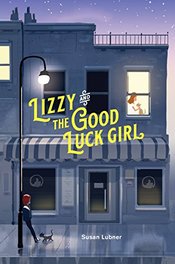 Lizzy and the Good Luck Girl is a story about family, love, friendship, and at its heart, the power of hope. It’s my fifth published book out of dozens unpublished. But writing this book, I learned that sometimes it’s important to step out of my comfort zone to get where I need to go: challenging myself with NaNoWriMo; setting a strict regimen of timed writing periods; attending a retreat that at first gave me pause and taking a hard look inside myself rather than my character to find the heart of a story. All of these were firsts for me. All of them crucial to creating this book. By early 2017, I had a polished manuscript ready to send off to my agent. I decided to wait until February 14, to submit it to her. Valentine’s Day might be a good sign that she and the right editor would love it. I hoped. I wasn’t disappointed. To purchase Lizzy and the Good Luck Girl go to Barnes and Noble at www.barnesandnoble.com/w/lizzy-and-the-good-luck-girl-susan-lubner/1128113191 or visit Indie Bound at www.indiebound.org/search/book?keys=lizzy+and+the+good+luck+girl .
To learn more about Susan and her other books, visit her website at www.susanlubner.com/Home.html . |
Peruse blogs for advice and tips from KidLit creatives.
Categories
All
Archives
April 2024
Click to set custom HTML
Click on the RSS Feed button above to receive notifications of new posts on this blog.
|
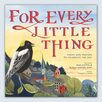
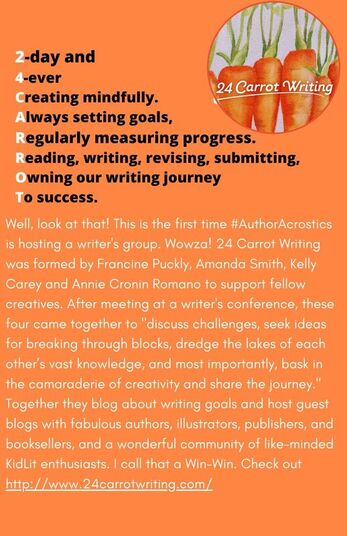
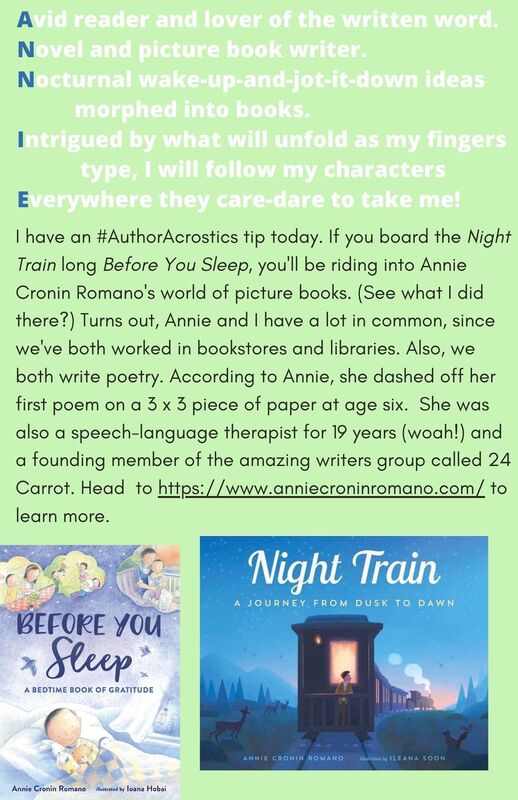
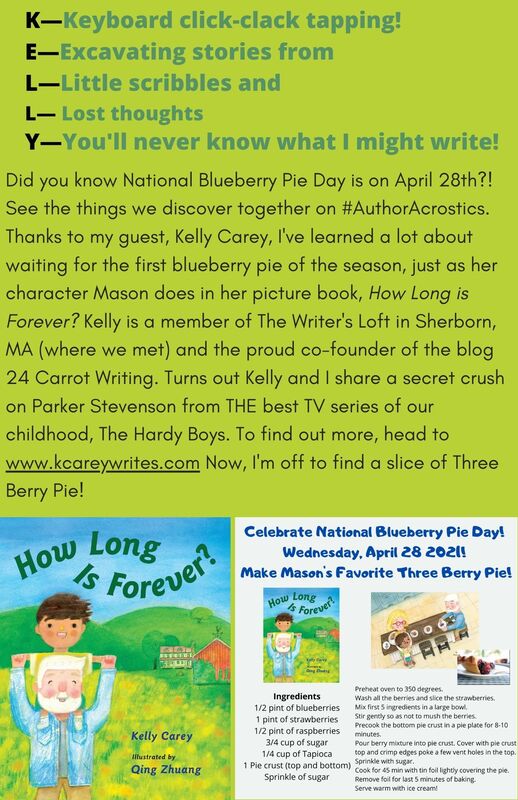





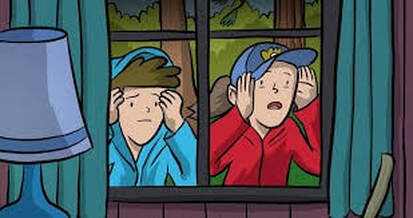
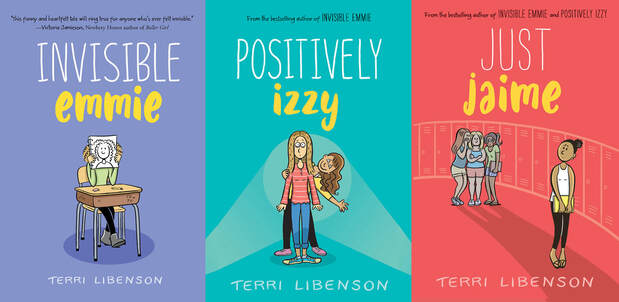
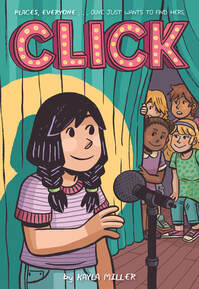
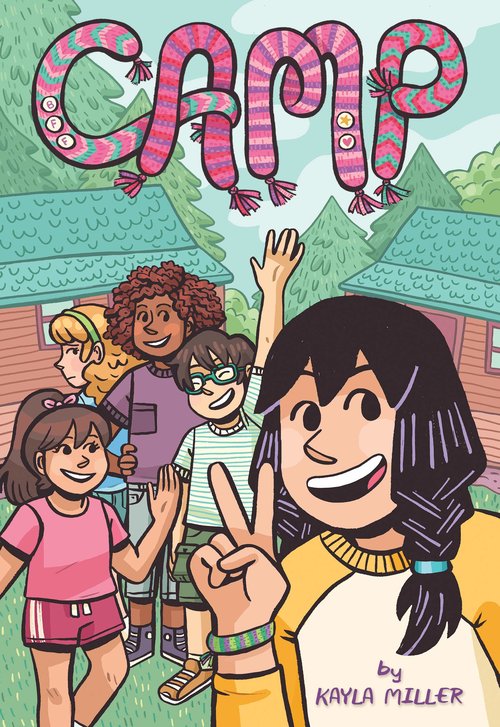
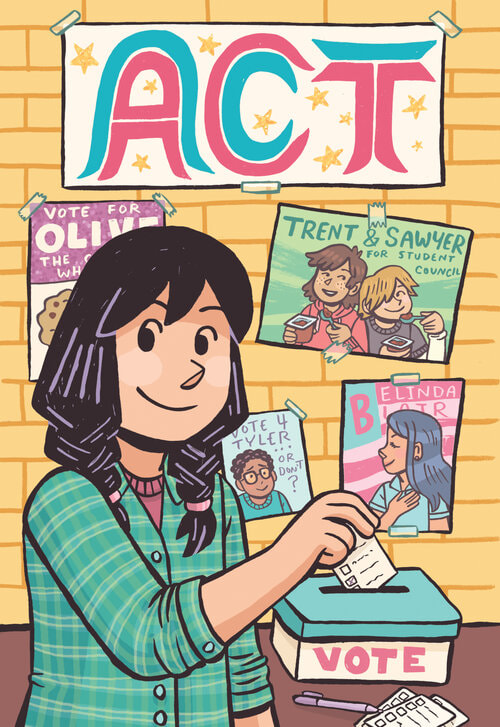




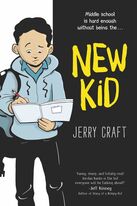
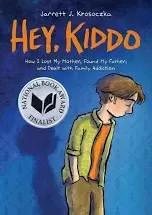
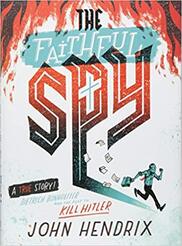
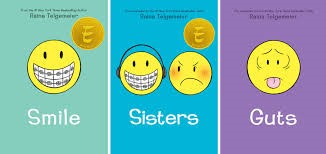
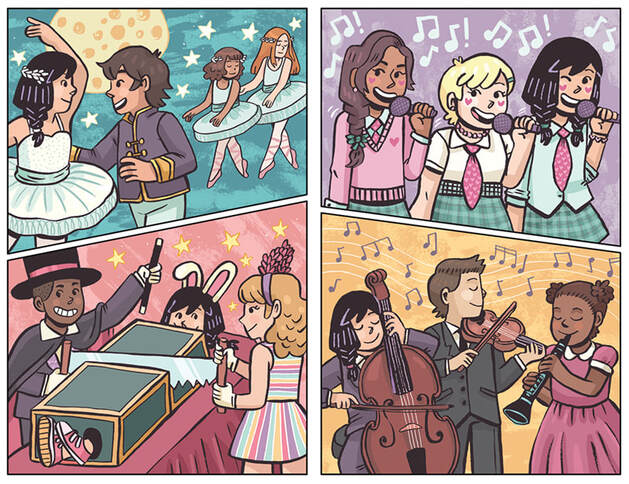
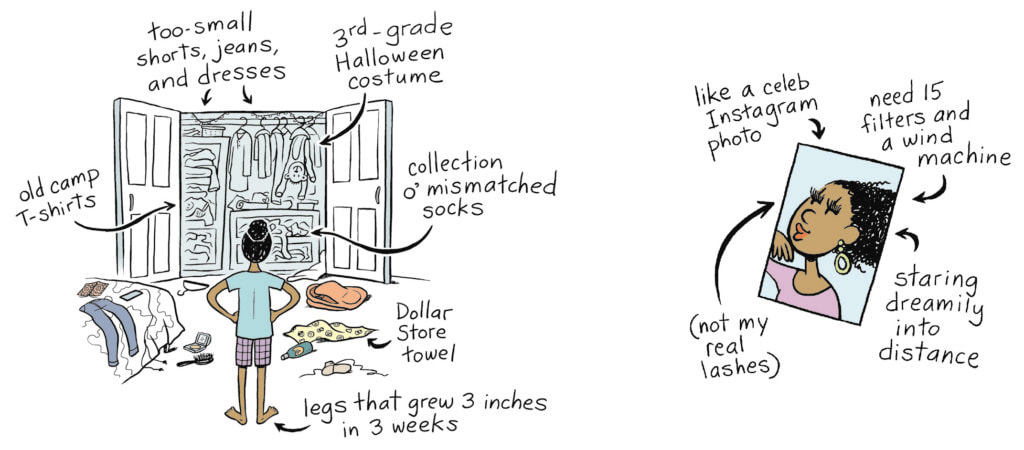
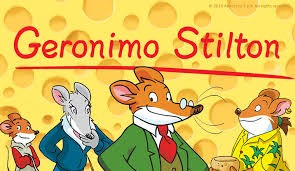
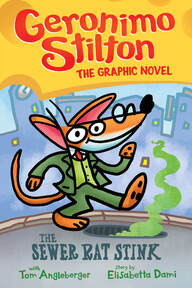






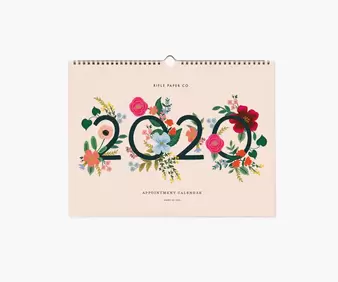



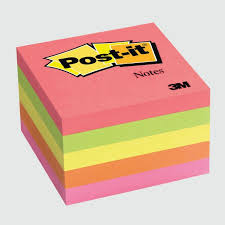



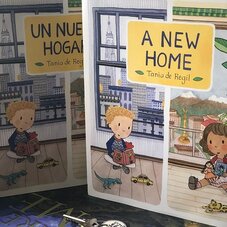






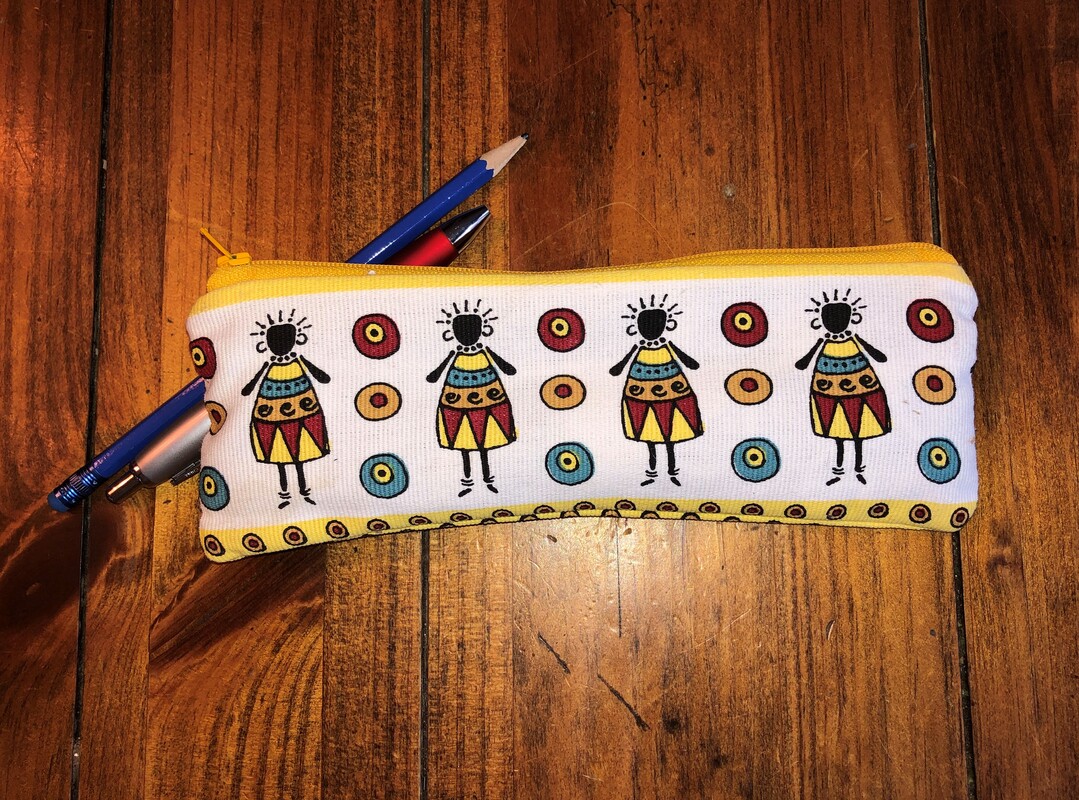


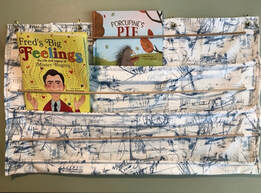
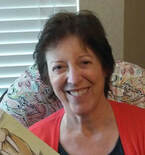
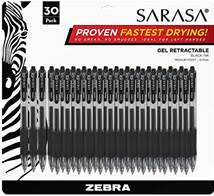








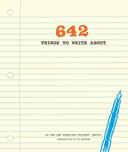
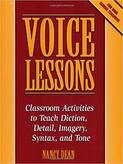
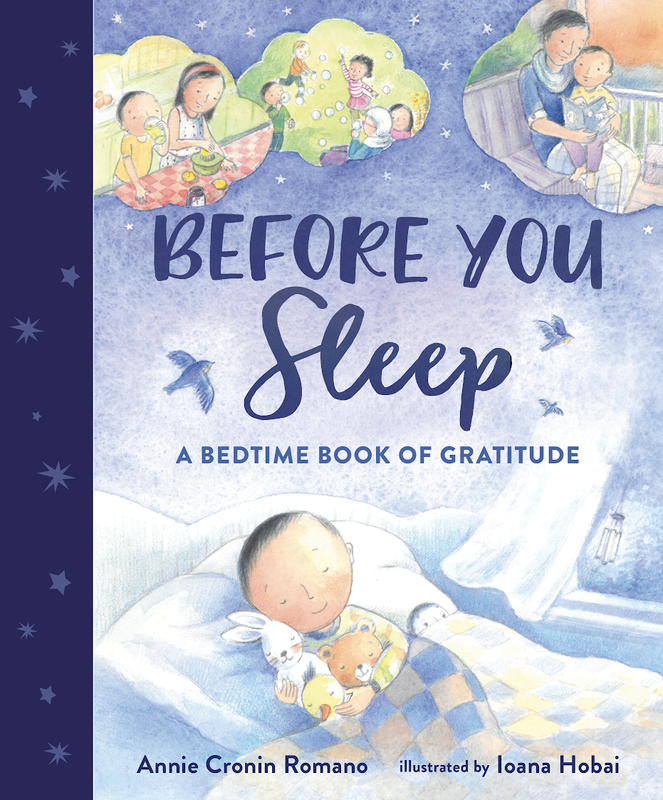
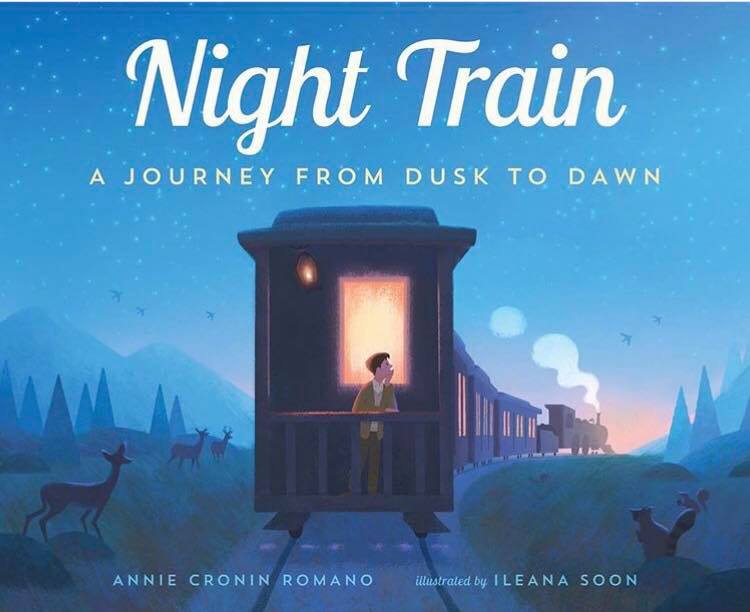


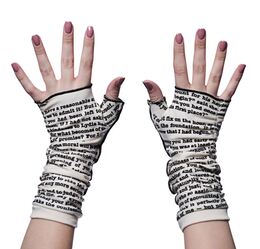


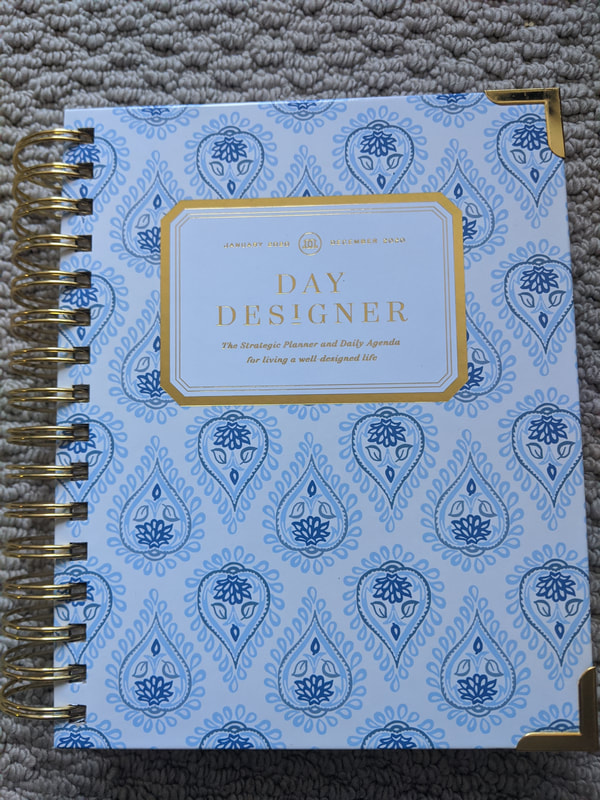
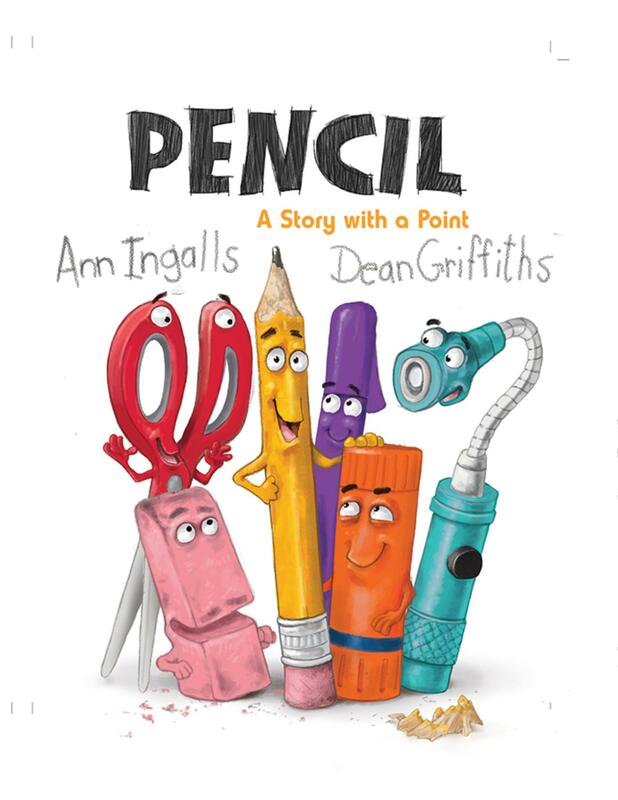
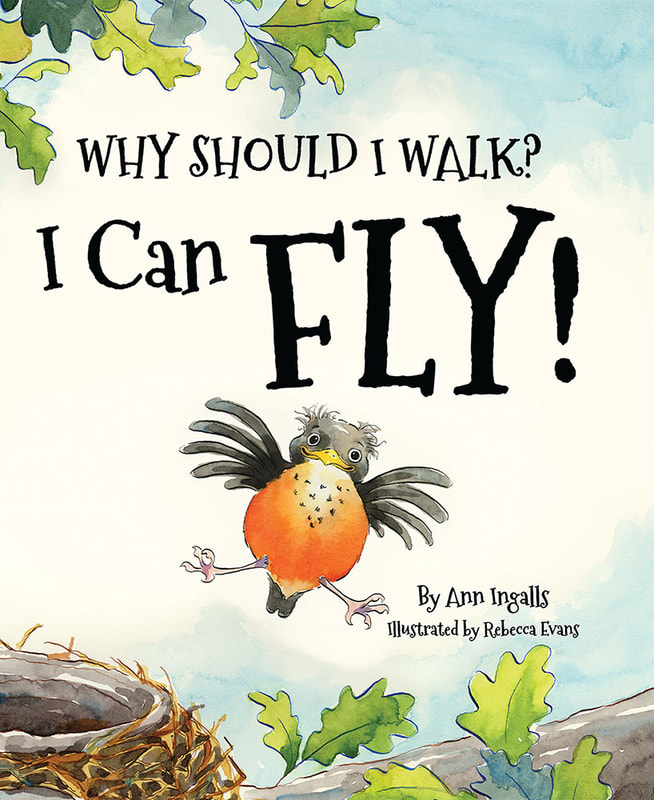
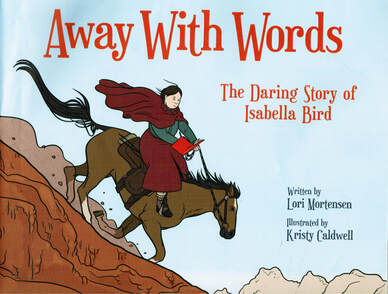
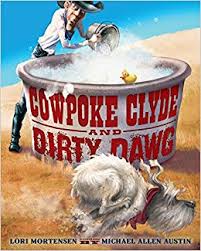
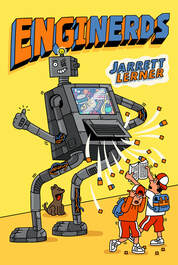
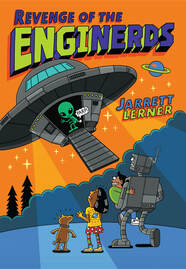
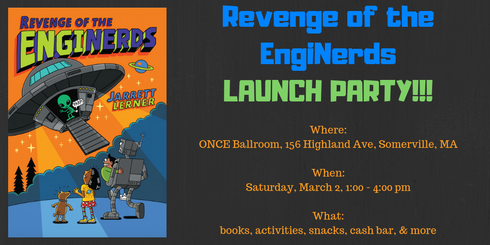
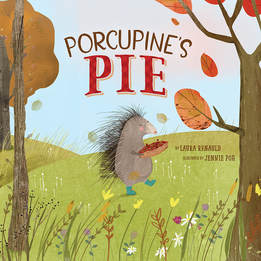
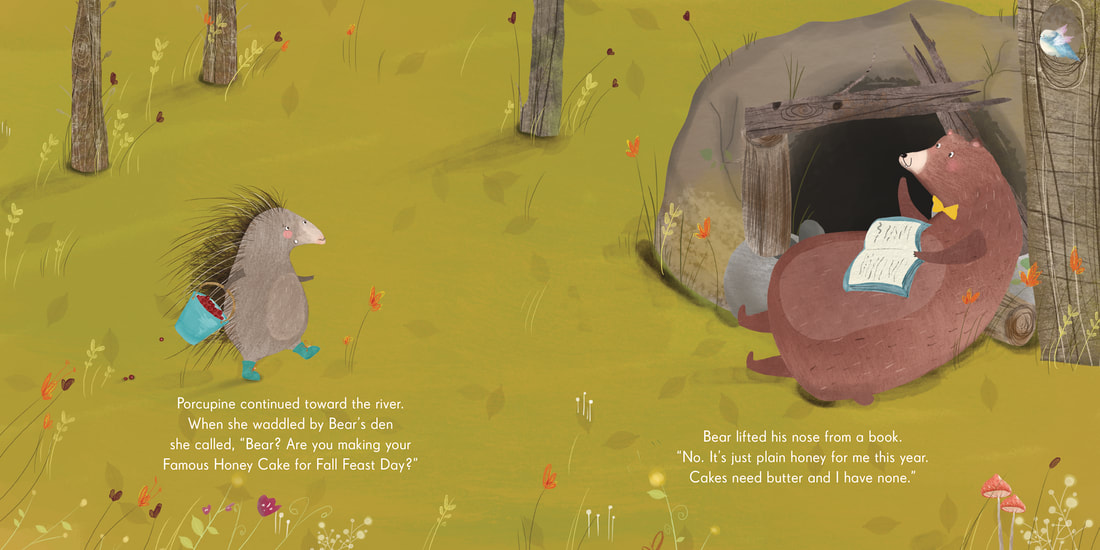


 RSS Feed
RSS Feed